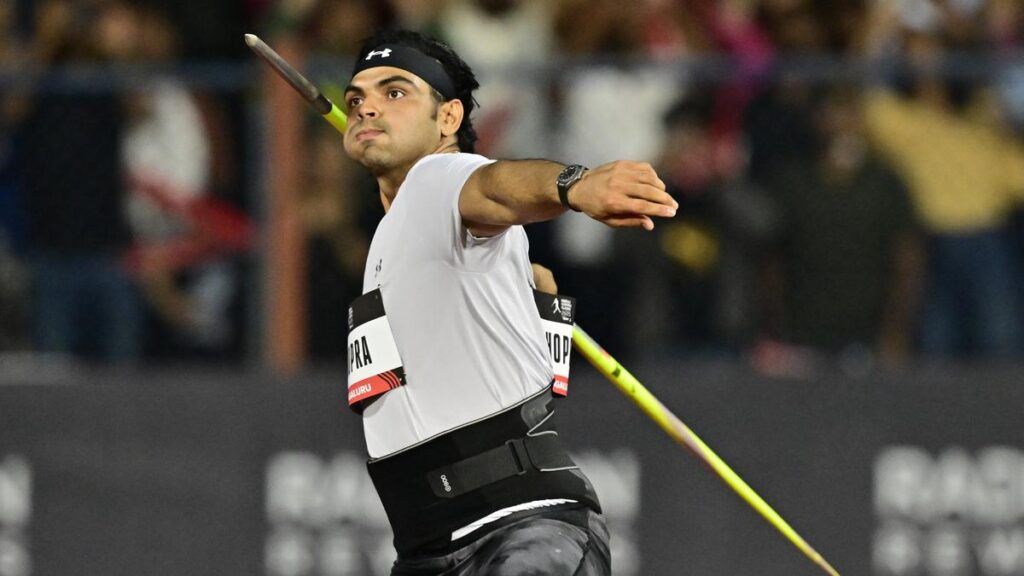970x125
Most sporting legends and highly rated coaches who visit India for professional stints or promotional activities invariably say that “India is a sleeping giant”. The underlying assumption is that the nation’s world-leading population of 1.46 billion — with a significant portion of that young — gives it a unique advantage to churn out sports stars like goods produced in an assembly line.
970x125
The reality, however, is that this is true only in cricket and chess, and to an extent in shooting. India is a giant of the “gentlemen’s game” and also the sport’s financial nerve-centre. In chess, it has as many as 88 Grandmasters, is the current chess Olympiad winner and has in its ranks the reigning World Champion in D. Gukesh. Shooting accounts for seven of India’s 41 Olympic medals, and one of two individual golds.
There are indeed glorious exceptions in other sports. Javelin thrower Neeraj Chopra bagged the gold at Tokyo 2020 Olympics and added a silver in Paris last year. Badminton player P.V. Sindhu is a double Olympic medallist from Rio 2016 and Tokyo 2020.
The Indian men’s hockey team overcame years of under-performance to earn a bronze each in Tokyo and Paris. But with the medal count at each Olympics still in single digits, India is far from being a sporting nation.
The reasons are plenty. The National Sports Federations reek of bad governance, with many intra-association battles reaching the doorsteps of the highest courts of the land. Inadequate coaching, limited sports infrastructure and funding, and non-uniform access to cutting-edge sports science and nutrition have also contributed. An epidemic of doping has gripped Indian sport, causing much embarrassment, even as safe spaces for women to compete are still insufficient.
But one prime reason experts point out is the less-than-ideal grassroots-level participation and the lack of an enabling atmosphere to nurture those who take up sport from a young age. The absence of a clear pathway, right from the beginner level all the way up to the professional, has ended up dissuading parents from looking at sport as a viable career option.
This stress is currently being felt in tennis and football, two of the biggest global disciplines. No Indian is ranked in the top-200 in singles tennis among men or women, and such is the state of football that the conduct of the country’s top flight, the Indian Super League, is in limbo and the National team — which has never qualified for the World Cup — is outside the top-100 in FIFA world rankings.
What can India learn from successful sporting countries? One is to integrate sports and education, a feature that is being discussed seriously in India only now. In the United States of America, college sports are a big draw and there are scholarship opportunities aplenty. In fact, the growth of chess in India is a good example of a school-driven policy working wonders.
“I was really lucky that my dad had the foresight to realise that in the U.S. sports can actually open doors,” Rajeev Ram, four-time Grand Slam doubles champion from the United States and former World No. 1, told The Hindu.
“Even if you’re not very good or professional, he always said that tennis is actually going to improve my educational opportunities. I would have never gotten the chances to go to the colleges that I did if I wasn’t a tennis player,” the 41-year-old two-time Olympic silver medallist added.
Yet, it is not all doom and gloom. There are models worth emulating within India, like that of badminton, where a solid junior structure, high-quality coaching and consistent exposure to big-ticket events has propelled the sport.
In the recent past, there has been a push to streamline and professionalise the sporting ecosystem. The setting up of a task force, with Olympic gold medallist shooter Abhinav Bindra as chairman, to design a framework to improve governance, and the introduction of the National Sports Governance Bill — which has its detractors — are moves by the Ministry of Youth Affairs and Sports to this end.
There is hope that Khelo India, a school- and college-level initiative, and the increase in sports funding by private bodies through the Corporate Social Responsibility (CSR) route will help bring about wholesale changes.
India also seems to think that hosting the 2036 Olympics can usher in a revolution. The experience of the 2010 Commonwealth Games in Delhi was mixed and there are many who believe that the potential ₹64,000 crore outlay is too high a price for a developing country. India, nevertheless, has chosen to dream. And actions should now back it.
Published – August 15, 2025 12:59 am IST
970x125

